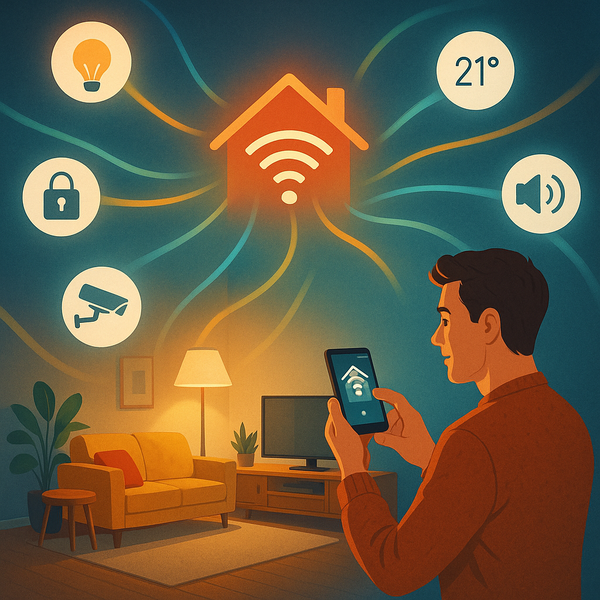
Transform your living space into a seamlessly connected environment with smart home automation. Imagine controlling your lights, thermostat, security, and entertainment systems with simple voice commands or a tap on your smartphone. This technology not only enhances convenience but also offers increased energy efficiency and improved home security, making your life simpler and more secure.
Getting Started with Smart Home Automation
Embarking on your smart home journey is more accessible than ever. The core of any smart home system is a central hub, which acts as the brain, connecting all your smart devices and allowing them to communicate with each other and with you. Popular hubs include Amazon Echo, Google Nest Hub, and Apple HomePod, each offering slightly different ecosystems and compatibility. Once you have a hub, you can begin adding devices. Smart lighting is a fantastic starting point; systems like Philips Hue or LIFX allow you to control brightness, color, and set schedules, all from your phone. Consider smart thermostats, such as Nest or Ecobee, which learn your habits and adjust temperature automatically, saving you money on energy bills. Security is another key area, with smart locks, cameras, and doorbells providing remote monitoring and control. The beauty of smart home automation lies in its modularity; you can start small with just a few devices and expand your system over time as your needs and budget allow.
Enhancing Comfort and Convenience
Smart home automation is fundamentally about making your daily life more comfortable and convenient. Picture waking up to gradually brightening lights, the aroma of coffee brewing, and your favorite news podcast playing – all initiated automatically. With voice assistants, you can adjust the thermostat without leaving your bed, dim the lights for movie night, or lock your doors as you’re leaving. Smart plugs can turn any ordinary appliance into a smart one, allowing you to schedule them or control them remotely. For instance, you can turn off a curling iron that was accidentally left on or ensure your pet’s food dispenser activates at the right time. The integration of various devices creates a personalized experience. Imagine a “good morning” scene that turns on specific lights, raises the blinds, and starts the news, all with a single command or at a set time. This level of control and automation streamlines routines, frees up time, and reduces mental clutter.
Boosting Energy Efficiency and Security
Beyond convenience, smart home automation offers significant benefits in energy efficiency and security. Smart thermostats are pioneers in this space, learning your heating and cooling patterns to optimize usage and reduce energy waste. They can also be controlled remotely, allowing you to adjust the temperature before you arrive home, so you’re not heating or cooling an empty house. Smart lighting systems enable you to schedule lights to turn off automatically when rooms are unoccupied or to dim them during certain hours, further conserving energy. From a security perspective, smart cameras and doorbells provide real-time video feeds and motion alerts directly to your smartphone, allowing you to see who is at your door or monitor your property from anywhere in the world. Smart locks offer keyless entry and the ability to grant temporary access to guests or service providers, all while keeping a log of who entered and when. Integrated security systems can also trigger alarms, send notifications, and even alert authorities in case of a break-in, providing an unparalleled sense of safety and peace of mind for homeowners.
Integrating Your Smart Devices
The true power of smart home automation is realized through seamless integration. While individual smart devices offer impressive functionality, linking them together creates a truly intelligent environment. This is where smart home platforms and protocols come into play. Platforms like Apple HomeKit, Google Home, and Amazon Alexa allow you to control a wide range of compatible devices from a single app or through voice commands. For deeper integration, consider home automation hubs that support various communication protocols such as Wi-Fi, Bluetooth, Z-Wave, and Zigbee. These hubs can bridge the gap between devices that might not otherwise be able to communicate, enabling sophisticated automation routines. For example, you could set up a routine where a smart door sensor detecting entry triggers a specific set of lights to turn on, the thermostat adjusts to a preferred temperature, and a welcome message is played through a smart speaker. As the Internet of Things (IoT) continues to evolve, the possibilities for creating a personalized, efficient, and secure smart home are virtually limitless, offering continuous opportunities for innovation and enhanced living.

